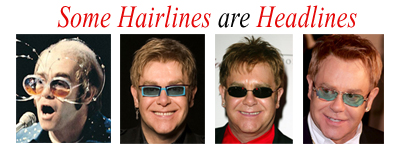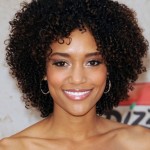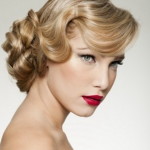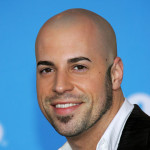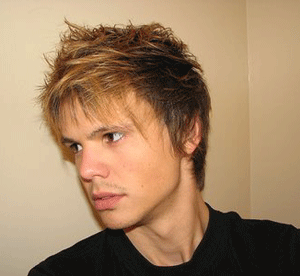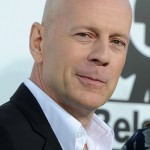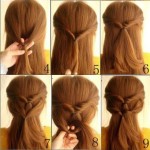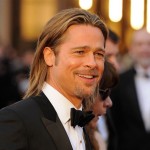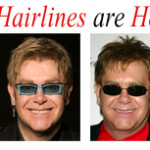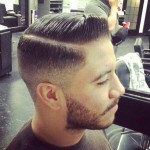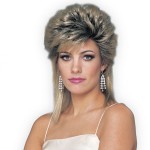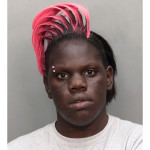I’ve written before about personal statements people make with their bodies in the form of tattoos and piercings, notably that such adornments are less body art and more jumping on to a bandwagon. They can be discreet or they can be in your face, but I fail to see how they advance your cause in any way at all, and in fact make you a good deal poorer.
But what about hair? After all, almost all people have at least some for a good portion of their lives, and women generally from cradle to grave. How you choose to wear it is equally a personal statement, often demure, sometimes challenging, occasionally radical. What it says is either what people want it to say, though the subtext about what it says of you as a person is the more enlightening by far, either through the boldness of your statement, or, conversely, the minimal, demure, conventional go-with-the-crowd look adopted by those who simply don’t want to make a fuss.
Many of the more exotic styles, the ones designed to stand out in a crowd, will have taken hours of preparation and/or have been very costly to acquire. Personally I can’t be doing with either cost or time with my hair, but for the wearers it is evidently worth every second and every penny. You can simply look good, but then merely looking good doesn’t have to take a massive effort.
Why should that be? If you turn heads it will have paid for itself, presumably, if being the centre of attention is what you desire, though it could also be a case of emulating heroes or following fashions, since hairstyles apparently change with the seasons just as readily as clothes. Many are styled down to the last hair, while others seem elaborately designed to look as if they haven’t been styled – the sauvage look. Copious shampoos and conditioners and hair sprays and gels have been lavished on these frothy confections. To the wearers this is stuff that matters, since they come back for more, they require a new look at very regular intervals. And some just look ridiculous – though not everyone appears to recognise when they look beyond absurd. What, I wonder, is the psychology behind our obsession, or not, with our hair?
This is evidently a subject requiring further analysis, so let’s start with men. In my case I went through a spell of growing it almost to my shoulders (which did not work well because it was too thin, the same problem my daughter Lindsey has had in her quest to grow long, luscious locks), had it cut short and then started to lose it rapidly from my mid-20s. It may have stopped short of the temples, but there is very little I can now do with it, comparatively speaking. Time was when it was de rigueur to have a comb-over like Bobby Charlton or my dad (or in more recent times, Donald Trump), though that has become in the past 20 years or so a total passion-killer and would simply make the wearer a laughing stock, a social outcast on a par with those wearing bad toupees.
I’ve only ever worn a wig once in my lengthy stage career, being for a production of An Inspector Calls in which I was cast as the fiancé, Gerald Croft. Being somewhat long in the tooth for that role and lacking in a full head of hair, the director had me wear a large, shaggy black wig. My kids saw the play and howled with laughter. What was the large black rodent on my head?!
I can recall one bridge club in which I used to play was generally very warm. There was a chap who played there regularly who wore the sort of wig that fooled nobody. Indeed, it was never, ever mentioned in conversation but became a subject of fascination because as the evening progressed you would often see beads of sweat dripping down from under the hairpiece and down his forehead. If in his vanity he thought anybody regarded this as his natural hair, any true friend would surely have disabused him of any such notion. But equally he was of an age where wooing was not a prime motivation, and if it was then baldness is not a factor that would put off the ladies so he was barking up the wrong tree.
The answer is not hard to deduce: both genders have a fear of the ageing factor – he did not want to admit his best and most hirsute years were behind him, so there is a variety of self-delusion that says we can hold back the tide of the years and stay young and vibrant. Despite many thinking along the same lines, the reality is that you have to spend a lot of money to retain those looks, and in many cases any attempt so to do is largely counterproductive.
If you really can’t stand the idea of baldness but do have pots of money sitting around doing nothing very much, the Elton John and Wayne Rooney approach is available to you: hair transplants over a period of time, giving an unnaturally glossy barnet when but a few years earlier your hairline was receding faster than the tide. It doesn’t fool anybody, so like the chap and his wig this is ultimately a matter of personal vanity. I doubt if it makes much difference to the fan base either way, though if it makes them feel young they would doubtless say it’s a matter of perception. Maybe a bald footballer is less likely to be picked by his manager? Maybe Elt bald as a coot would have sold fewer records?
I’ve long since given up any such notions, having long since come to the conclusion that less can sometimes be more, certainly when it comes to hair. In recent years bald heads have ceased to be a novelty and can in some circumstances be regarded as attractive. Never did Yul Brynner any harm, but now some men shave their heads through choice. Completely bald is not just a recognition of nature and gravity but a lifestyle choice to create a distinctive look.
In my case it’s more a statement of practicality, since I hate it when my hair grows over my ears and sticks out in many directions. Shaving to a crew cut means I don’t have to worry about it for a couple of months. Step out of the shower and I drip-dry in a few minutes; no hours spent drying and styling, no gels or lotions, no bother whatever! Best of all, no paying barbers for a few minutes work – I can do it all myself. OK, so it doesn’t look spectacular but it’s relatively neat, easy to manage and is now part of my image. No artificial aids to regaining lost youth, less can indeed be more!
At one time it was regarded as “cissy” for men to spend hours messing with their hair, though in the 60s it was fashionable in many circles for men to have short back and sides, often gelled down with Brylcreem, or alternatively copying moptops or whatever was worn by your favourite pop stars. Then styles have expanded in all directions and the amount of time and money spent grooming has generally increased. Some are bitterly regrettable, like the 1970s Kevin Keegan oily corkscrew perm, for example, never to be copied, but fair to say that some celebs have spawned a thousand hair-do’s.
On the minimal effort side, following rock trends into long hair was fairly low maintenance, as was going reggae with dreadlocks – simply stop washing your hair! Punks brought in grungy coloured mohicans and hair art, much of it too ridiculous for words, but since the new romantics with their mullets and back-combing from the early 80s that has all changed and men have paid far more attention to appearance, not just as an aid to career development and sexual advancement but because vanity is no longer seen necessarily as a bad thing – a view endorsed by the people trying to flog you 15 different products for hair care.
That much is understandable, but when men start dying their hair I begin to worry. It’s bad enough for women, which I’ll come to in a moment, but from politicians down to we mere mortals this seems to be a common trend, a form of vanity equivalent to wearing toupees. It’s always been socially acceptable for men to be grey, indeed the perception was that grey and even white hair is “distinguished” and even, whisper it, potentially sexy to women.
Remember that Philip Schofield, children’s TV presenter? He went grey early and dyed his hair in-keeping with the expectation that for kids TV you had to look youthful. Then he graduated to adult programmes and stopped doing the bottle brown look. His honesty went down well and his career suffered not one jot for appearing in his natural state… though a female equivalent would not have their contract renewed if they stopped dying, sad to say.
Helmut Kohl, one time Chancellor of Germany, chose to deny he was dying his hair chestnut brown, which earned him no little ridicule since it was so blatantly obvious. Since he left office Kohl now looks grey around the temples with a salt-and-pepper pate. I would not be surprised if most of our politicians don’t touch up their hair, but maybe that is our fault as voters. Not so long ago we expected our politicians to be older and to have gained wisdom and experience. Now, in the JFK tradition we expect our leaders to be young, slim, have a full head of hair and to be bounding with vigour and energy, much of which is an act. Maybe the “young” hair styles have a psychological impact by making the wearer feel and behave younger?
If expectations of men are changing but most ignore and let nature take its course, it’s very different for women, which I put down to the hypocrisy of modern society but also our views of ageing. Within my lifetime women of 50+ would be greying en route to pure white. They would soon be grandmothers who looked like grandmothers. Their hairstyles would be biased towards perms and blue rinses, but not these days.
Certainly you can no longer say people in their 50s feel old, and while men no longer look to be part of the pipe and slippers set, women are expected to look and behave as MILFs and “glamorous grannies.” The goal is now to look 30 years younger, minimum. Those who can afford it get cosmetic surgery, which to my mind can make women look a tad ridiculous and every bit as artificial as those with tattoos and piercings, but hair must be styled fashionably and either be a naturalistic colour viably suggesting the person to be considerably younger, or in any artificial shade you want and which creates an impression everywhere you go. Let’s face it, you can adopt not just the rainbow but the full palate of colours if you want to so desire. Want a temporary change? Wash-in wash-out, easy as you like. Short hair but want long hair? No problem – get extensions. For every hair problem there is a solution, not to mention treatments for dandruff, dry or greasy hair, split ends, anything goes, there is a haircare product to meet your every whim.
Conversely, fashion cuts notwithstanding, younger women might well wear hairstyles to make them look older and more worldly, with which to attract men of a certain level of maturity. There comes a point when a woman may grow into her hairstyle, from which point, often in the early 30s, she might be ageing gracefully or disgracefully but her hairstyle looks progressively younger – until such point as she feels it no longer matters and chooses to go wild in whatever direction she wants. I don’t say this with sexist or critical intent, since the pressure is often from the expectations of society or employers. For the ambitious woman, keeping a career path is often more demanding than for the equivalent man, and, bizarre and trivial though it might seem, making a statement with a haircut might well be the difference between success and failure. How petty we all are!
My MBA course director was Prof Jane McKenzie, a fine looking woman in her mid-50s, formidably bright and the sort of person who could have forged a great career in anything she turned her hand to. Jane had, and to the best of my knowledge still has, a shock of steely grey hair which she always kept shortish. To my mind it seems impossible to imagine Jane as anything other than grey-haired, which is not to say that has any negative connotations whatsoever. I wish more women had the confidence to ignore shallow opinion and stay resolutely true to themselves – and if that means sticking with the colour and style that nature intended, so be it.
Granted the issue makes less difference in professions other than health and academia, depending on the expectations and image consciousness of the person concerned, but even so women have a far higher propensity to visit the hairdresser regularly than many men. Supply and demand, the hairdressers see them coming, schmooze a lot more than barbers (my friend Roy demands of his barber no small talk whatsoever), provide coffee and chat, make an entire social event of the visit – and charge ten times more for the privilege! Personally I think what women pay their hairdressers to be one of the scandals of the modern age, particularly when the final result may end up not much different, give or take the odd highlight – but then women seem happy to pay through the nose for a weekly visit. Maybe a total change of image you might think that justified, but when they look exactly the same it’s sometimes mystifying what benefit the hairdresser has added – other than preventing roots showing through.
Coming back to the subject of baldness, with men there is an expectation that hair loss is associated with genetic predisposition and testosterone, but for women it is a social faux pas to be bald, such that even sufferers of alopecia and those who lose hair through doses of chemotherapy often wear wigs to compensate. Yet there are instances where a bald woman can be cute, sexy and/or distinctive in a positive way. Her bald phase helped Sinead O’Connor to stand out from the crowd, and was a lifestyle choice rather than a medical condition. Gail Porter’s baldness was attributed to a medical condition but she chose to make a positive image from her naked scalp, and good luck to her.
To me, what is on the inside counts far more. That is, intelligence and personality are the most vitally important factors; obviously a degree of personal care and hygiene would be expected, but I would not reject someone because they chose to wear their hair grey, or indeed because they wore it short, long, bobbed, curly, in pony tails or any other fashion, any more than I would reject them because they were tall or short, plump or skinny. Just as I change my look on occasions with beard (currently in goatee mode) or clean shaven, their hair might reflect their mood or activities (same as I grew my hair and beard long to appear as Victorian patriarch Archibald Carlyle in East Lynne but shaved both immediately thereafter), but neither would I object if they were happy with their hairstyle.
However, the people for whom I feel most sorry are those who have hair with which you can do precisely nothing; it has a mind of its own. Fictionally, Harry Potter is blessed with hair that follows its own path, regardless of how it is cut, but I have met several people in real life who have had the same problem. One such is my long-term friend, Nigel. Nowadays he has even less hair than me, but as a teenager he was blessed or cursed, depending on your point of view, with a natural afro, which for a white lad was very unusual and disconcerting. No doubt a good hairdresser could have done something different, but to the barbers he visited at the time it was generally the done thing to sculpt his hair into something akin to a flathead ramp. Indeed, it earned him a nickname at school, one which I refused to use: Wedge. Maybe in this case the baldness was not such a bad idea – he looks better without.
For me, I accept my hair, such as it is. My son Adam is proud of his wavy quiff, which makes him look like a young James Dean, though it depresses him to know that family history means he will almost certainly start losing his hair from about 23 onwards. I tell him to stay positive and make the best of who he is, or at least to make sure he has plenty of photographs to remind himself how he looked when his locks flowed freely!

